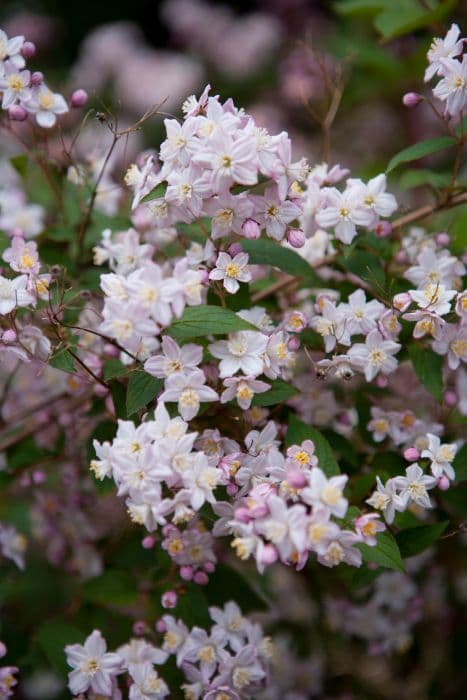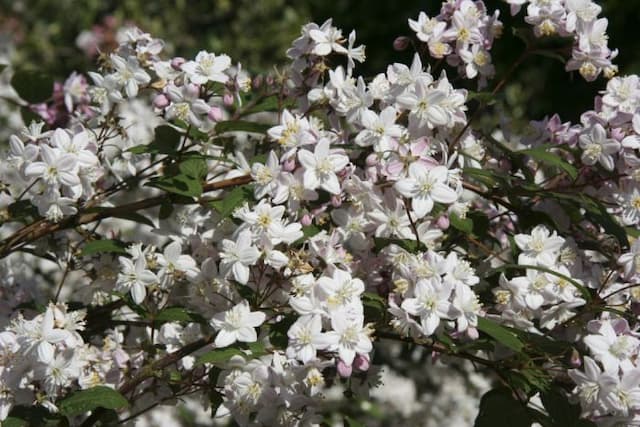Paniculate hydrangea 'Wim's Red' Hydrangea paniculata 'Wim's Red' (PBR)

ABOUT
A deciduous shrub, to 2m tall, with toothed green leaves. Strong, branching, red-tinted stems carry 30cm long, cone-shaped flower clusters from spring into autumn. The flowers change colour from white in spring through pink in summer before maturing to a wine-red in autumn
About this plant
 Names
NamesSynonyms
Panicled Hydrangea, Panicle Hydrangea, Peegee Hydrangea, Limelight Hydrangea, Strawberry Hydrangea.
Common names
Hydrangea paniculata 'Wim's Red' (PBR)
 Characteristics
CharacteristicsLife cycle
Perennials
Foliage type
Deciduous
Color of leaves
Green
Flower color
Varies
Height
6-8 feet (1.8-2.4 meters)
Spread
4-6 feet (1.2-1.8 meters)
Plant type
Shrub
Hardiness zones
3-8
Native area
China Japan Korea
Benefits
 General Benefits
General Benefits- Ornamental Appeal: Hydrangea paniculata 'Wim's Red' is known for its striking color transformation from white to pink to red, which adds aesthetic value to gardens.
- Seasonal Interest: This variety offers visual interest throughout the seasons, with lush green foliage in spring and summer, and colorful blooms in late summer to fall.
- Attracts Pollinators: The flowers attract butterflies and bees, helping to support local ecosystems.
- Hardy Nature: It is a robust plant that typically withstands cold winters, making it suitable for a variety of climates.
- Low Maintenance: Requires minimal care once established, making it a good choice for gardeners of all skill levels.
- Versatile Landscaping: Can be used in various landscaping designs, including as a specimen plant, in borders, or as part of a mass planting.
- Long Blooming Period: It has a lengthy flowering period which provides a long-lasting display of flowers.
- Can be Pruned to Size: The plant can be pruned to fit the desired size and shape, which is ideal for gardens with limited space.
 Medical Properties
Medical PropertiesThis plant is not used for medical purposes.
 Air-purifying Qualities
Air-purifying QualitiesThis plant is not specifically known for air purifying qualities.
 Other Uses
Other Uses- Hydrangea paniculata 'Wim's Red' can be used as a natural dye source. The blossoms can yield various shades of dye depending on the pH level of the water used.
- Photography enthusiasts may utilize this variety for macro photography practice due to its intricate and vibrant flower structures.
- The plant can be implemented in educational settings, such as botany classes, to demonstrate the changes in coloration through the seasons.
- Its sturdy stems can be used in craft projects, like making homemade wreaths or other dried floral arrangements.
- The flowers can be used as a natural confetti for outdoor celebrations, as they are biodegradable and less harmful to the environment than plastic confetti.
- These hydrangeas can be used as a living fence or privacy screen in gardens, providing both aesthetic appeal and functional separation.
- During winter, the dried flower heads can add texture and interest to otherwise bare gardens, providing visual interest throughout the colder months.
- Its vibrant color transitions can be a muse for artists and designers seeking inspiration from nature's color palettes for their works.
- The plant can be cultivated for use in educational demonstrations on the impact of soil pH on flower color in various plant species.
- Leaves of the Hydrangea paniculata 'Wim's Red' can be used for leaf casting art projects to create detailed, three-dimensional representations of leaves in plaster or cement.
Interesting Facts
 Feng Shui
Feng ShuiThe Hydrangea is not used in Feng Shui practice.
 Zodiac Sign Compitability
Zodiac Sign CompitabilityThe Hydrangea is not used in astrology practice.
 Plant Symbolism
Plant Symbolism- Heartfelt Emotions: Hydrangeas often symbolize heartfelt and genuine emotions, and 'Wim's Red', with its particularly passionate color, can emphasize deep feelings and an abundance of love.
- Gratitude: The lush blooms of the Hydrangea signify thankfulness, making it an appropriate gift to express gratitude.
- Understanding: The Hydrangea has been tied to the concept of understanding, perhaps due to its dense, multi-flowered clusters symbolizing a complex and empathetic heart.
- Vanity or Boastfulness: In some contexts, Hydrangeas may carry negative connotations of vanity or boastfulness due to their showy appearance.
- Perseverance: 'Wim's Red' can bloom from summer to fall, representing endurance and the ability to persist through changing conditions.
 Water
WaterPanicled hydrangeas, like 'Wim’s Red', should be watered deeply and thoroughly, ensuring that the soil is moist but not waterlogged. In general, aim for about 1 inch of water per week through rainfall or manual watering. During dry spells or in particularly hot weather, increase the frequency to twice per week, providing about 1 to 2 gallons of water per plant each time. Monitor the top few inches of soil; if it feels dry, it’s time to water again. Reduce watering in the fall to prepare the plant for winter dormancy.
 Light
LightPanicled hydrangeas such as 'Wim’s Red' thrive in full sun to partial shade. They perform best with at least 4 hours of direct sunlight but benefit from some afternoon shade in hotter climates to prevent scorching. Choose a spot that offers morning sunlight and dappled light in the afternoon for optimal growth and bloom production.
 Temperature
Temperature'Wim’s Red’ panicled hydrangea grows well in a wide range of temperatures and is hardy in USDA zones 3 through 8. They can tolerate winter temperatures as low as -40 degrees Fahrenheit and summer temperatures upwards of 95 degrees Fahrenheit. Ideally, this hydrangea prefers to grow in conditions where average summer temperatures stay below 90 degrees Fahrenheit for best growth and flowering.
 Pruning
PruningPanicled hydrangeas such as 'Wim’s Red' should be pruned to maintain shape and encourage vigorous growth and flowering. The best time to prune is late winter or early spring before new growth starts. These hydrangeas bloom on new wood, so pruning will not affect the current year’s blooms. Cut back about one third of the previous year’s growth to stimulate healthy new shoots and an abundance of flowers.
 Cleaning
CleaningAs needed
 Soil
SoilPanicled Hydrangea (Hydrangea paniculata 'Wim's Red') prefers a soil mix that's well-draining, rich in organic matter, and moist. An ideal mix would be one part loam, one part peat moss or compost, and one part coarse sand or perlite. The desired soil pH should be slightly acidic, ranging from 5.5 to 6.5.
 Repotting
RepottingPanicled Hydrangeas usually do not need frequent repotting and can thrive in the same pot for several years. It's best to repot the Panicled Hydrangea only when it outgrows its current container, which might be every 3 to 5 years.
 Humidity & Misting
Humidity & MistingPanicled Hydrangea prefers moderate to high humidity levels, ideally between 50-70%. They thrive with regular misting if the indoor air is too dry, but excessive humidity can lead to disease.
 Suitable locations
Suitable locationsIndoor
Ensure bright, indirect light and keep soil moist.
Outdoor
Plant in partial shade, enrich soil with compost, mulch well.
Hardiness zone
3-8 USDA
 Life cycle
Life cycleHydrangea paniculata 'Wim's Red' begins its life cycle when the seeds germinate in the spring after a period of cold stratification. The seedlings establish roots and foliage as they grow through the spring and summer. As the plant matures, it enters a period of rapid vegetative growth, developing a woody structure and ample foliage. In late summer to early fall, 'Wim's Red' produces cone-shaped flower panicles that transition from white to a deep red as the season progresses. After flowering, the plant enters dormancy during the winter months, with its above-ground parts dying back in areas with harsh winters or remaining semi-evergreen in milder climates. Each spring, the plant breaks dormancy, resuming growth from the crown and completing the cycle anew.
 Propogation
PropogationPropogation time
Late Winter - Early Spring
The most popular method of propagation for the Hydrangea paniculata 'Wim's Red' is by cuttings. This technique is best performed in late spring to early summer when the plant is actively growing. Semi-hardwood cuttings, which are stems that have begun to mature but are not yet fully woody, are typically taken. For optimal rooting potential, cuttings should be about 4 to 6 inches (10 to 15 centimeters) in length and contain several leaf nodes. Remove the lower leaves and optionally treat the cut end with a rooting hormone to encourage new root development. The cuttings should then be inserted into a moist, well-draining potting mix. Providing high humidity and consistent warmth will assist in promoting root growth, and within a few weeks, the cuttings should begin to establish roots. Once rooted well, they can be transplanted into individual pots and grown on until they are large enough to plant out.








![Hydrangea [Early Sensation]](/_next/image?url=https%3A%2F%2Fplants-admin.emdemapps.com%2Fimages%2Fplants%2F%2Fimages%2F604b6150338db.png&w=640&q=75)
